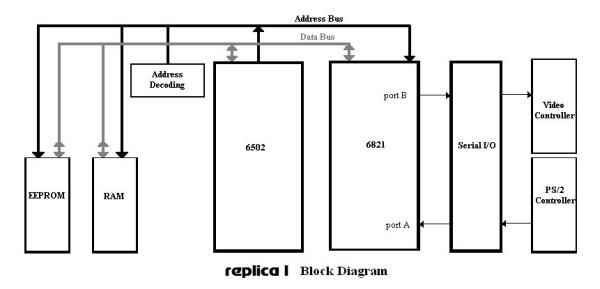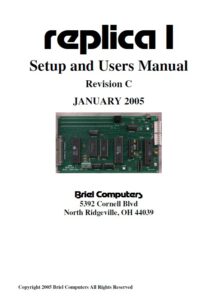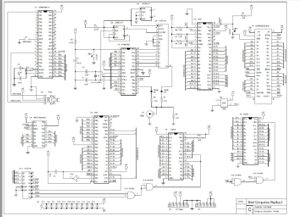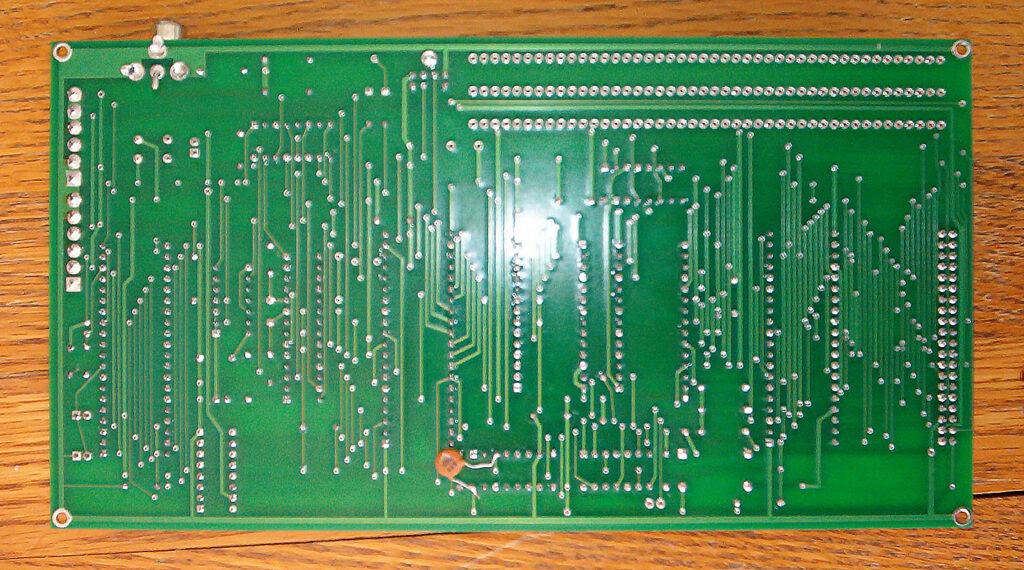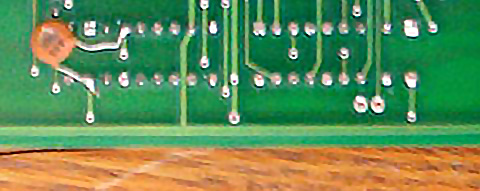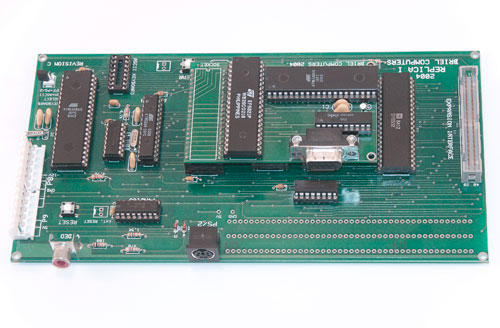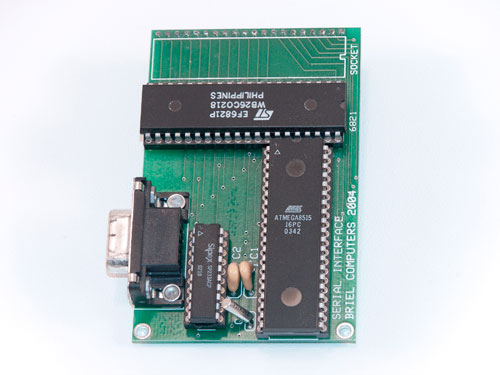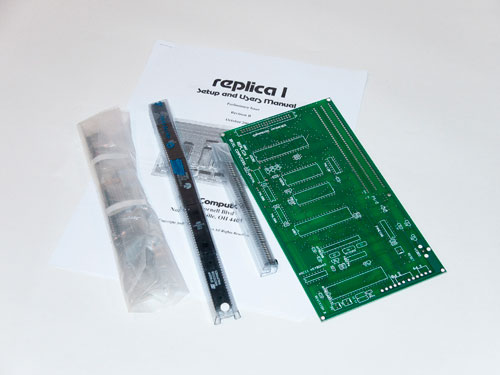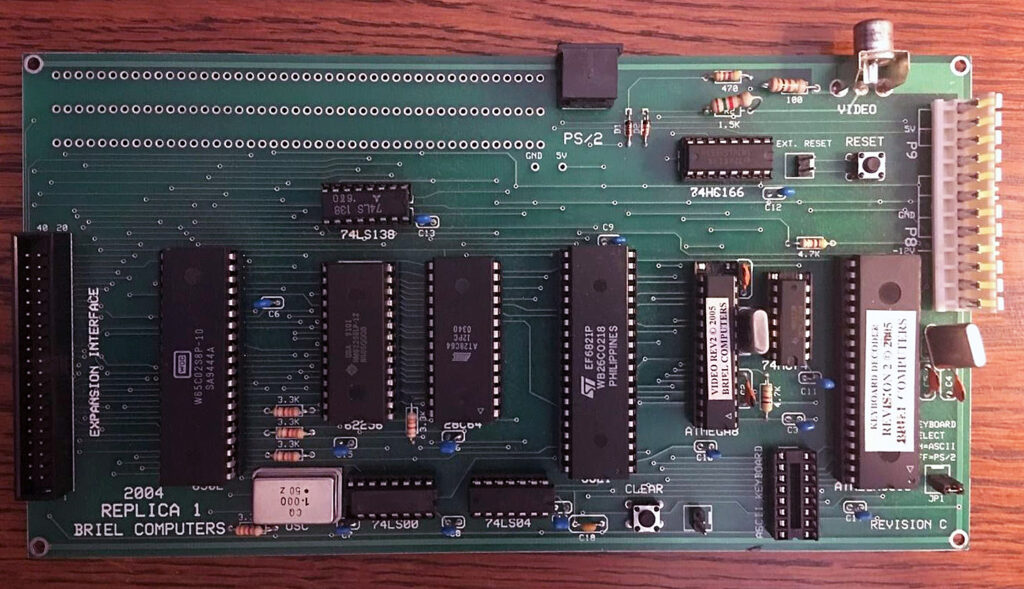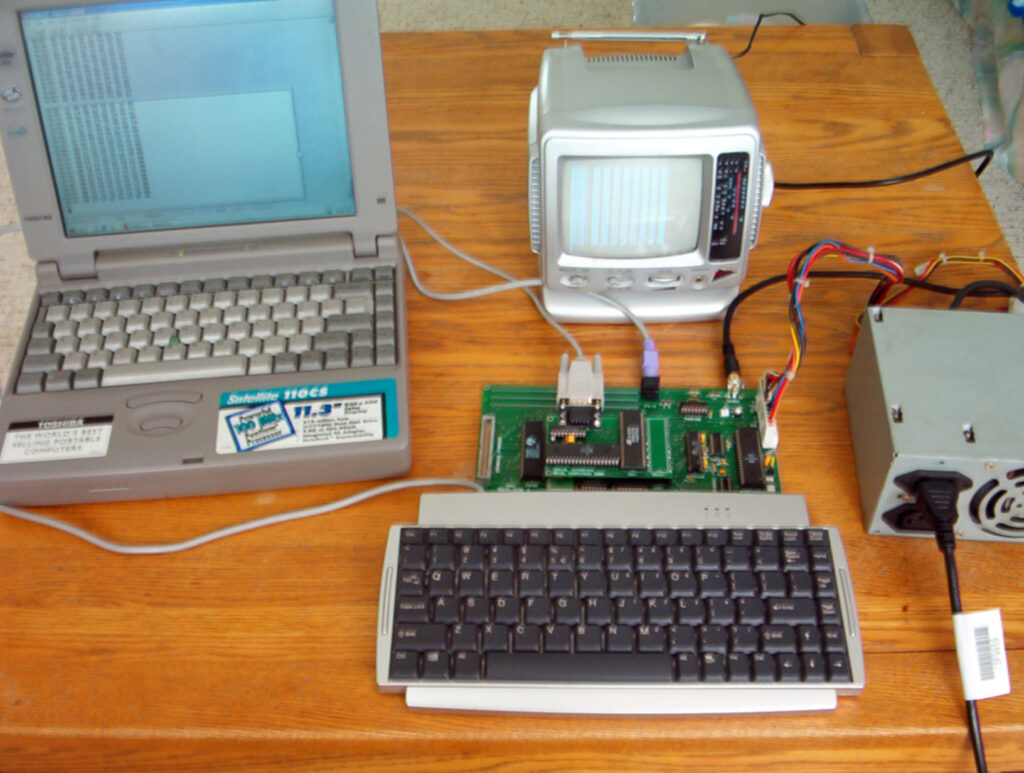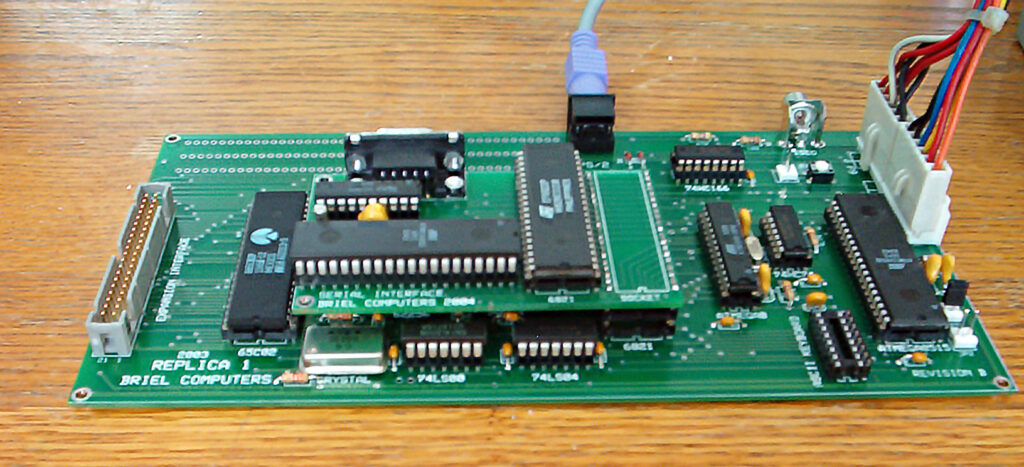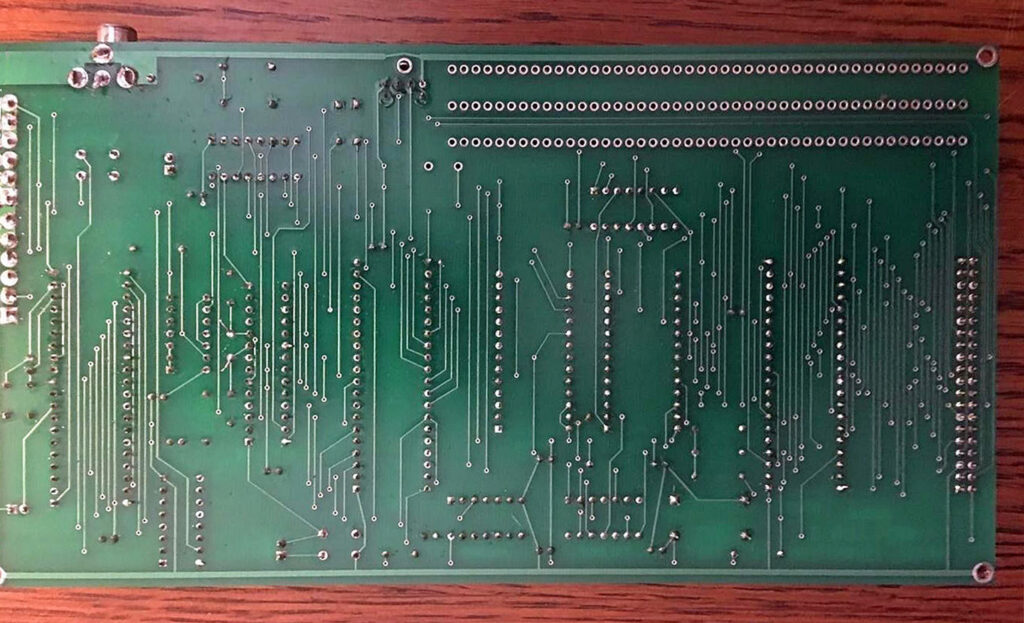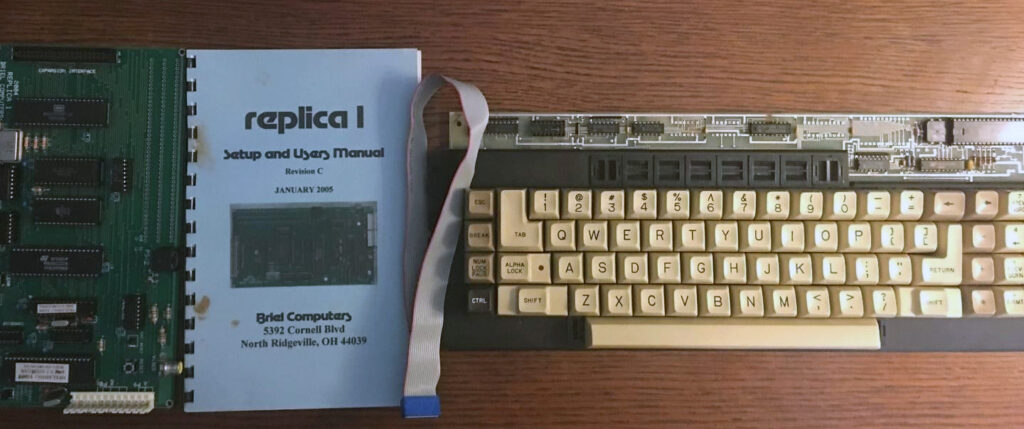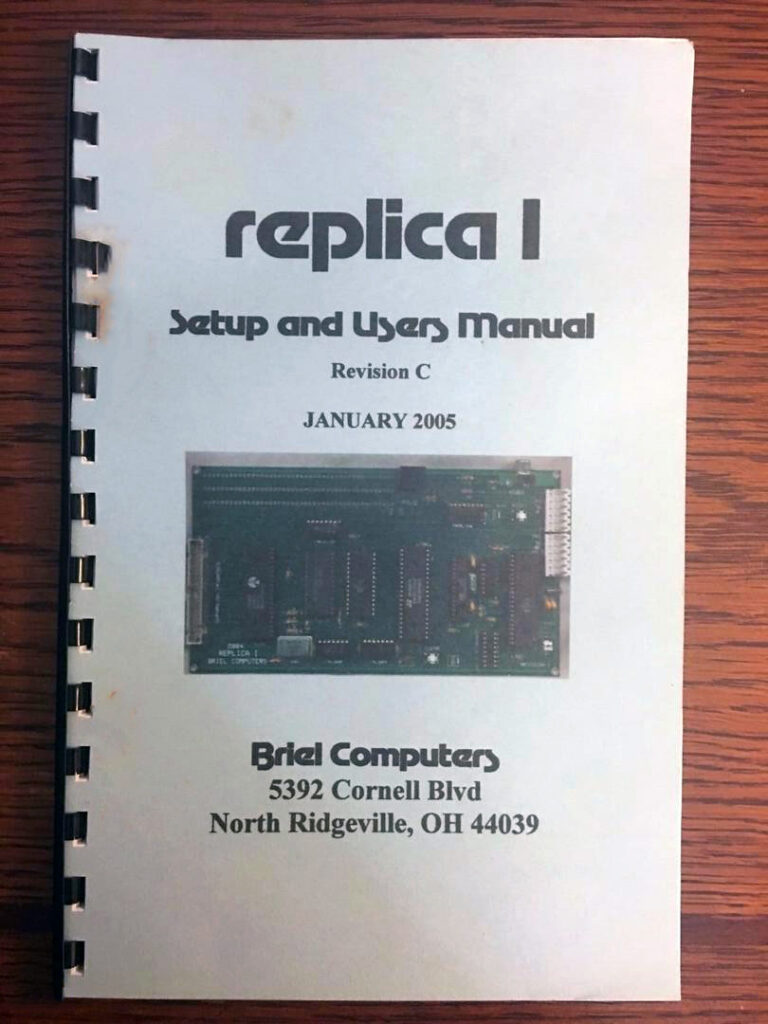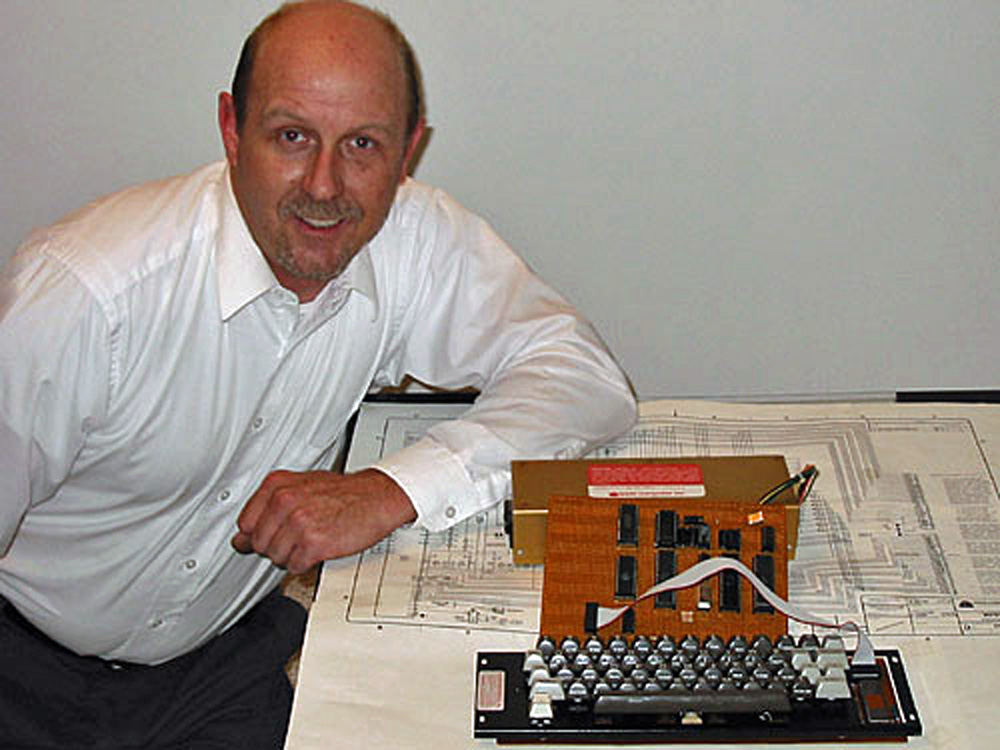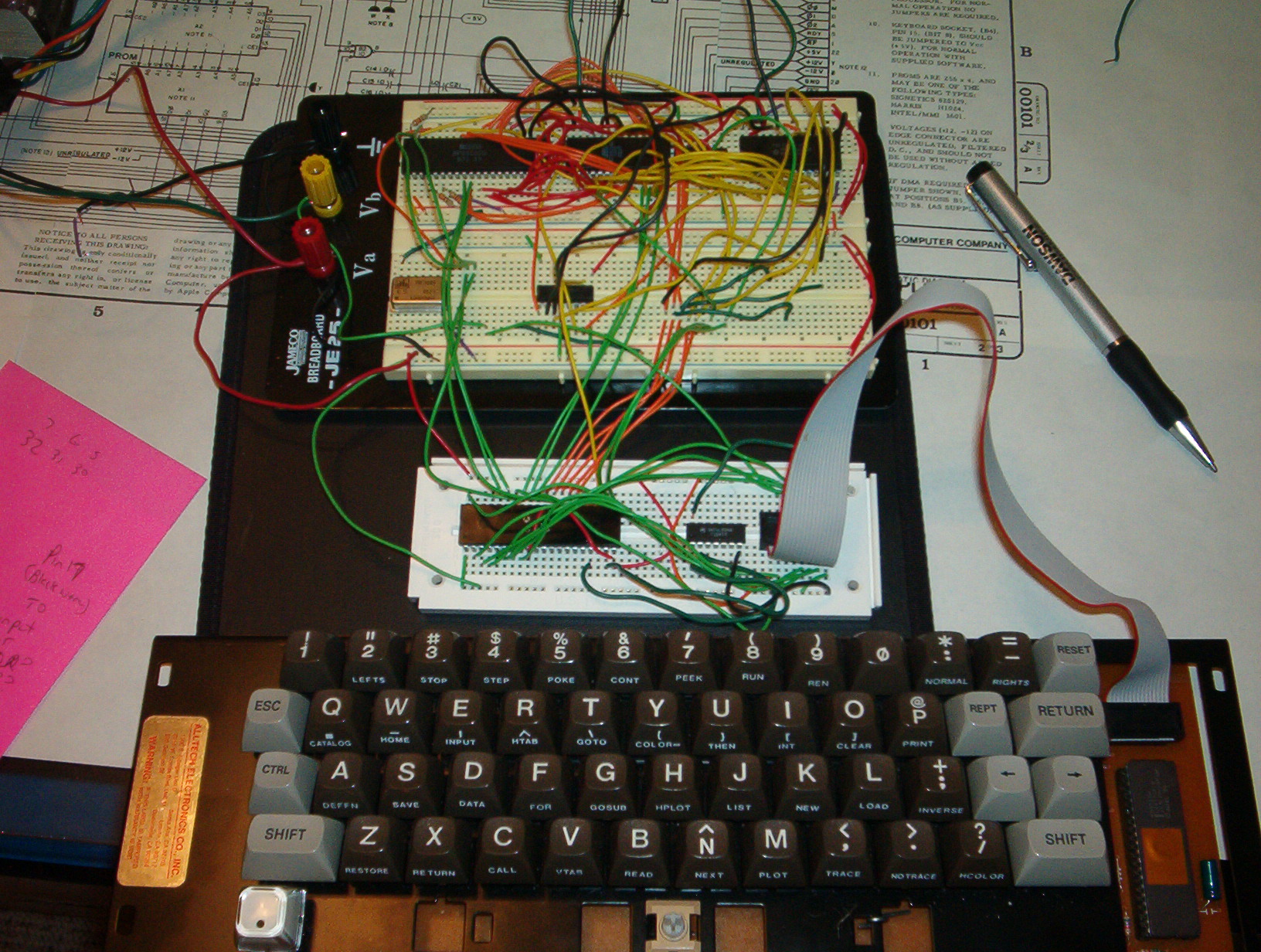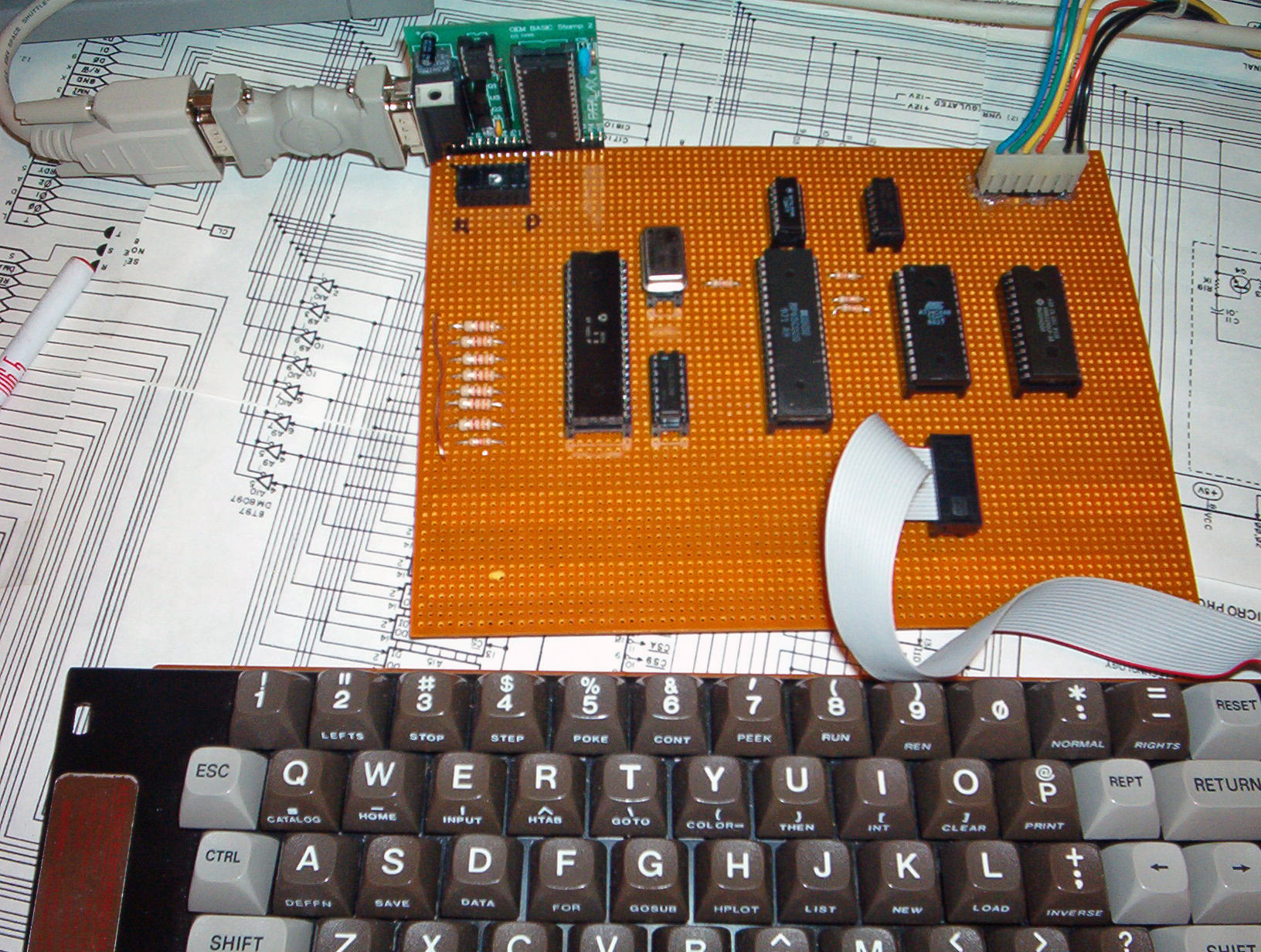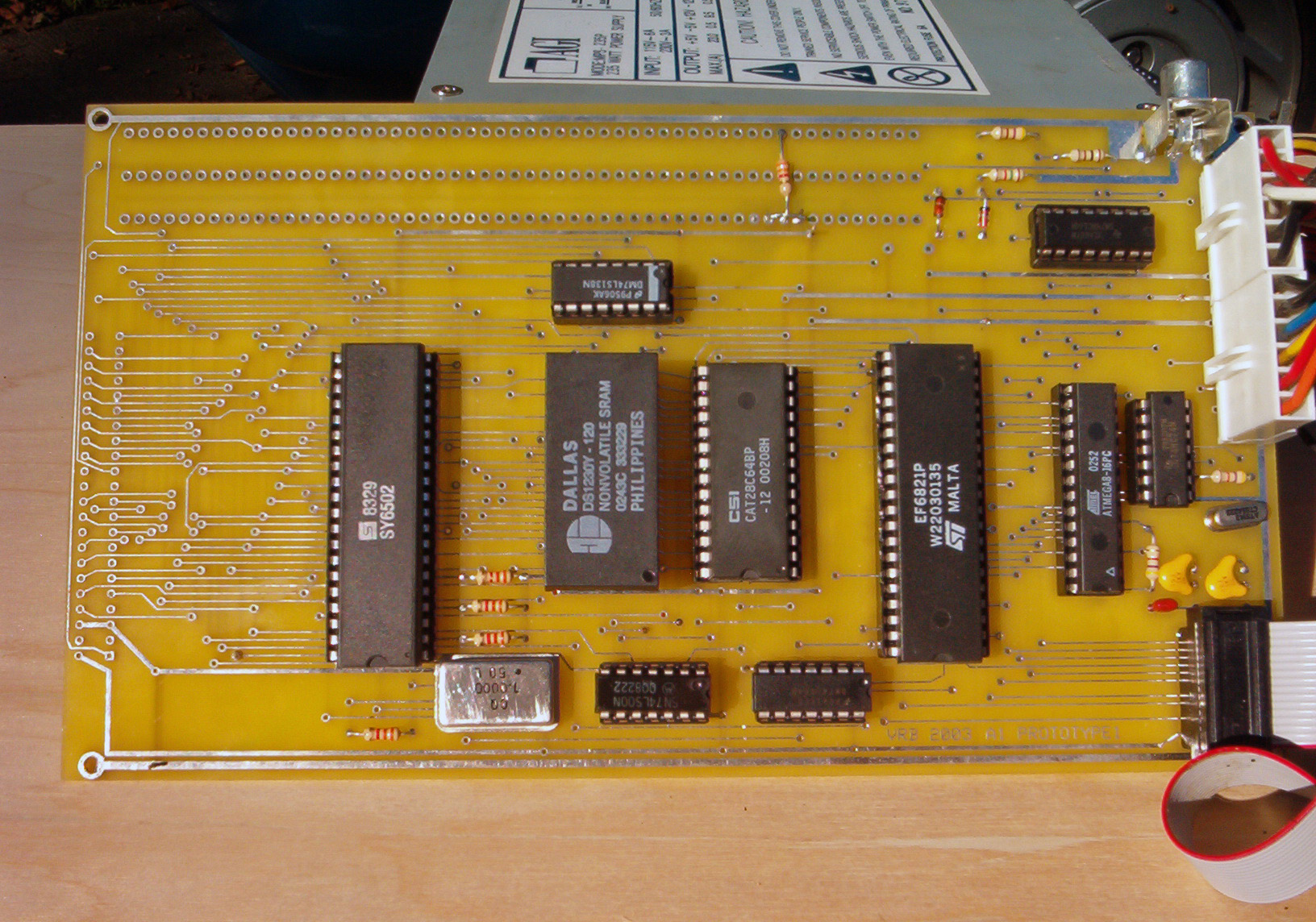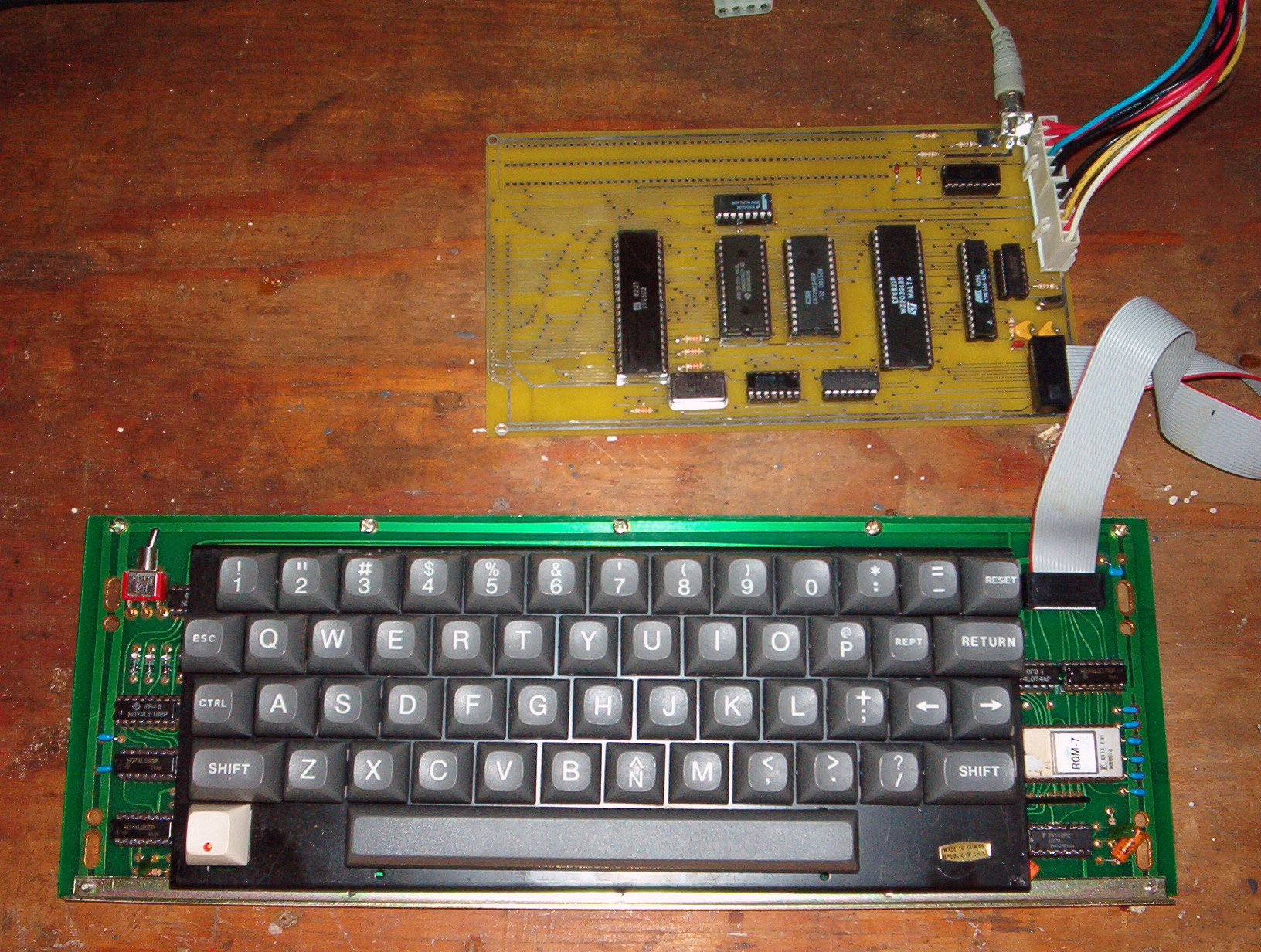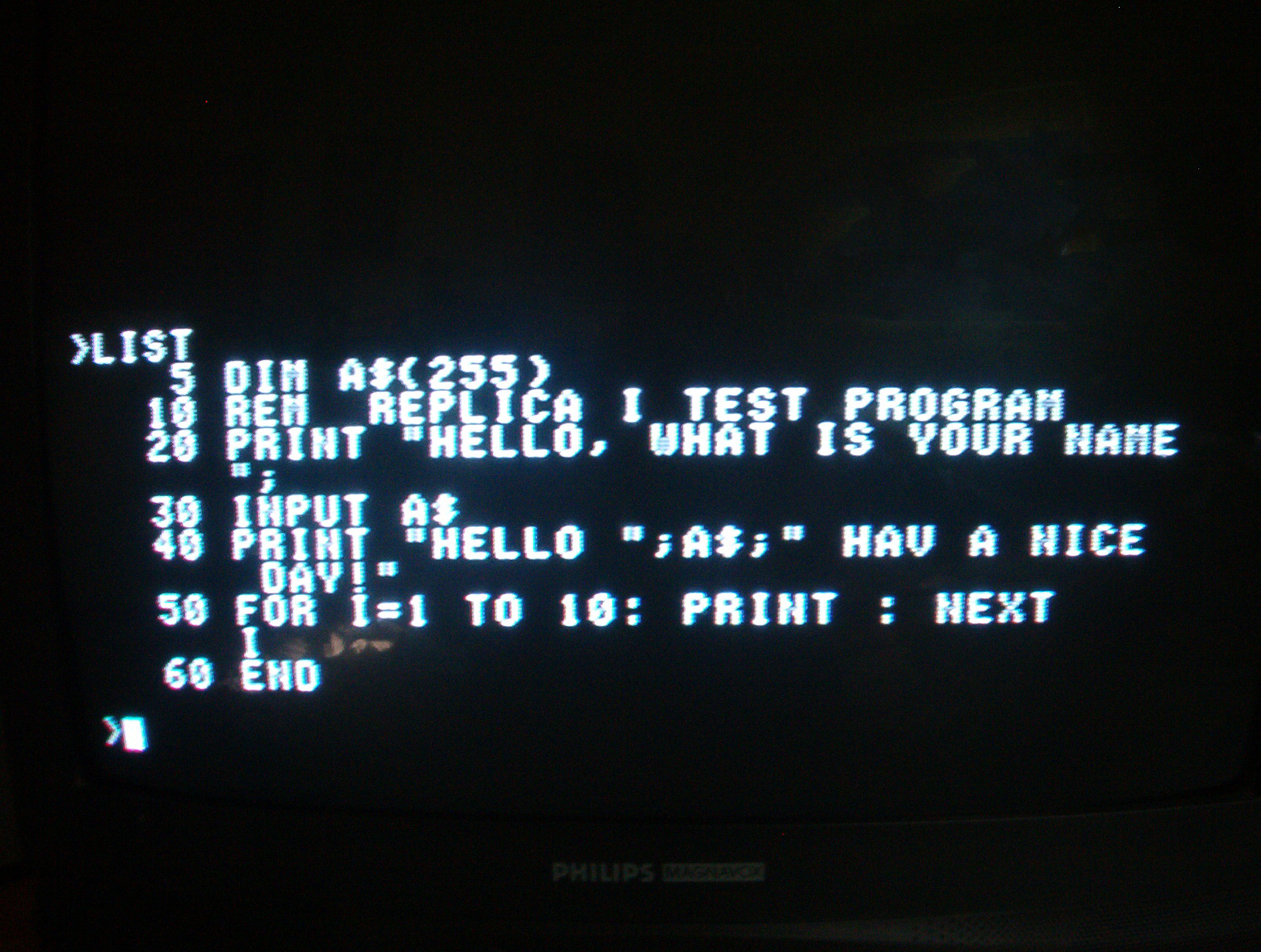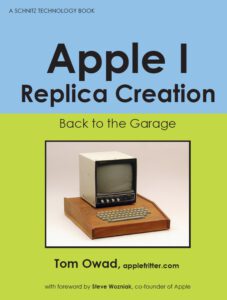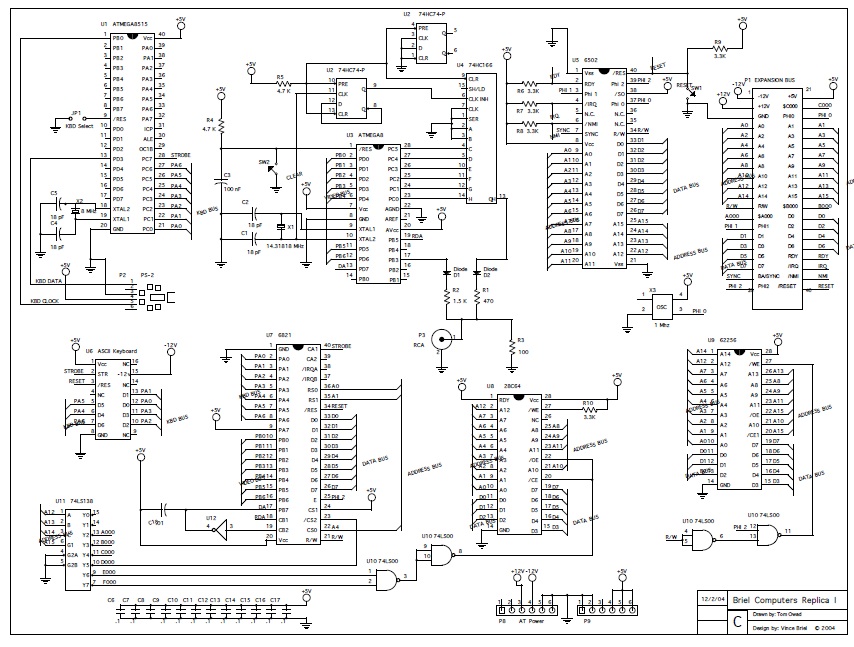The first Replica 1 is just called “Replica 1”.
The Replica 1 is as simple as can be, to make an Apple 1 look-a-like. CPU (65(C)02), SRAM (62256 32K), EEPROM 28C64 8K), clck (1 MHz can oscillator) is as expected, as is the 6821 PIA for I/O.
Keyboard input is original also, just an ASCII parallel keyboard, like the Apple 2 keyboard.
The video circuit, quite complicated in the original design, is replaced with a programmable ATMEGA8 with a 74LS166 shift register.
As an extra and optional a serial I/O board for Revision C is used to also allow a PS/1 keyboard as keyboard input. Made with a ATMEGA8515. The serial I/O board can also be used on the original Apple 1! There was also a Revision B with the serial I/O integrated on the main PCB, see the photos below.
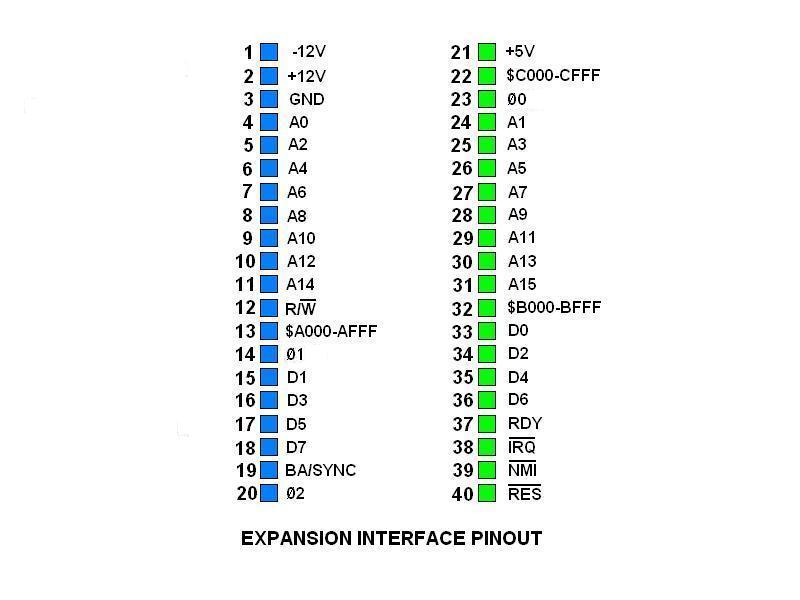
The Apple 1 expansion slot is replaced with a 40 pin connector, with the same signals at the same position but mechanically incompatible with the Apple 1.
The WOZmon monitor and Apple 1 Integer Basic are burned into the EEPROM.
The announcement by Vince Briel on Applefritter in 2005:
The Briel Computers Replica 1 is a fully functional clone of the Apple 1 © computer created by Steve Wozniak in 1976 that started Apple Computers ©. The Replica 1 is available as a kit that you solder all the components onto the circuit board, or preassembled.
A new circuit layout was done to implement a more simple circuit and replace older no longer available IC’s. This new design allows for a smaller board yet still gives all the functionality of the original design. Just like the Apple 1, the keyboard and power supply are not included. Simply add your own PC 386-Pentium© class power supply, a composite TV or monitor and a PS/2 keyboard or Apple II© style ASCII keyboard and you are set.
The serial I/O board is a unique design made to work with both the Replica I and the Apple 1. It is a piggy-back board that goes in the 6821 socket and is transparent to the computer. With this design anything that goes to the video display is sent to the serial I/O board and anything that comes in through the serial I/O is treated like a keystroke. This method reduces the speed of the I/O board to 2400bps but gives the advantage of being able to save BASIC programs as a text file. No setting switches or running software required. Just install it, set up Hyper Terminal, connector your serial cable (not included) and your all set.
Hardware bug
There is a hardware bug that may occur on the replica 1 boards. It causes occasional dropped characters from the display. There is a fairly easy fix but it does require soldering.
Requirements: .01uF ceramic disc capacitor, soldering iron (25W preferred) and solder.
Locate the chip labeled 74LS04 on the circuit board. Pin 3 is on the side that is closer to the edge of the board. Pin 14 is on the other side of the chip top pin.
So, the pins are labeled as follows:
|(74LS00 is here on the board) | | |74LS04 | |__8_____7 |__9_____6 |_10_____5 |_11_____4 |_12_____3* |_13_____2 |*14_____1 | |----- this is the edge of the board | |----------- 6821 is here on the board |
Pin 1 and 14 are closer to the 6821. Connect the ceramic capacitor on the bottom of the board to pins 3 and 14. Make sure the capacitor doesn’t touch any of the other pins on the chip. This will eliminate all dropped characters.

